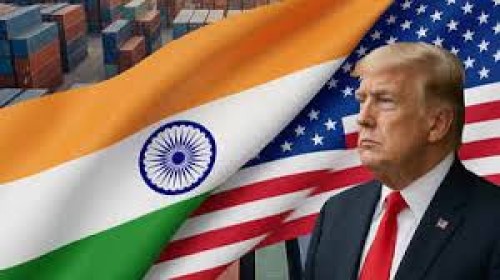Best Source for B2B Industry Trends, News and Updates

Trump described India as "a friend," yet accused the country of maintaining some of the highest tariffs in the world, alongside "strenuous and obnoxious non‑monetary trade barriers," citing India's purchases of Russian oil and weapons as justification for the penalty.
Despite the threat, Trump stated that talks are continuing, emphasizing that no final agreement has been reached. He noted that the tariff deadline remains firm, even as diplomacy continues in parallel. (Source: https://www.reuters.com/world/india/trump-says-us-india-still-negotiating-after-25-us-tariff-threat-2025-07-30/ )
Negotiations have failed to bridge significant differences, particularly over agricultural market access, as India is opposed to allowing imports of US staples such as wheat, corn, rice, and GM soybeans, concerns tied to safeguarding local farmers.
In 2024, India exported about $87 billion in goods and $33 billion in services to the US, while facing a $45.7 billion trade deficit on the US side. India's trade surplus with the US equaled around 1.2% of GDP.
Economists estimate that halving that surplus could shave 25–40 basis points off India's GDP, underlining the broader India tariff impact across key export-driven industries like textiles, pharmaceuticals, and ceramics.
Indian markets reacted sharply, the rupee fell to a five‑month low, and equities such as the Sensex and Nifty 50 slipped by nearly 0.9% before paring losses as investors framed the US move as pressure tactics rather than a final blow.
India's opposition parties sharply criticized Prime Minister Narendra Modi's government, calling the situation a diplomatic failure. Economists warned the tariff threat could undermine India's manufacturing drive and slow GDP growth by up to 0.4%.
Indian officials have affirmed their commitment to concluding a fair, balanced, and mutually beneficial trade deal, stressing that they will protect domestic interests, especially of farmers and micro, small, and medium enterprises.
India is reportedly preparing to resume broader talks in mid‑August, aiming for a deal by early autumn, possibly by September or October, despite the looming August 1 deadline.
Trump's approach mirrors his broader "Liberation Day" strategy, demanding reciprocal tariffs from multiple countries, including separate deals already reached with Vietnam, Japan, South Korea, the EU, and impacted energy/raw material agreements, such as his partnership with Pakistan, as negotiating leverage.
In summary, while President Trump has declared a severe 25% tariff and signalled additional penalties, officials from both sides emphasize that trade talks are still active, with India holding firm on protecting sensitive sectors and the US demanding deeper market access. The outcome will depend on whether India can accept new concessions or if both sides can find a middle ground before broader economic and political fallout worsens.
